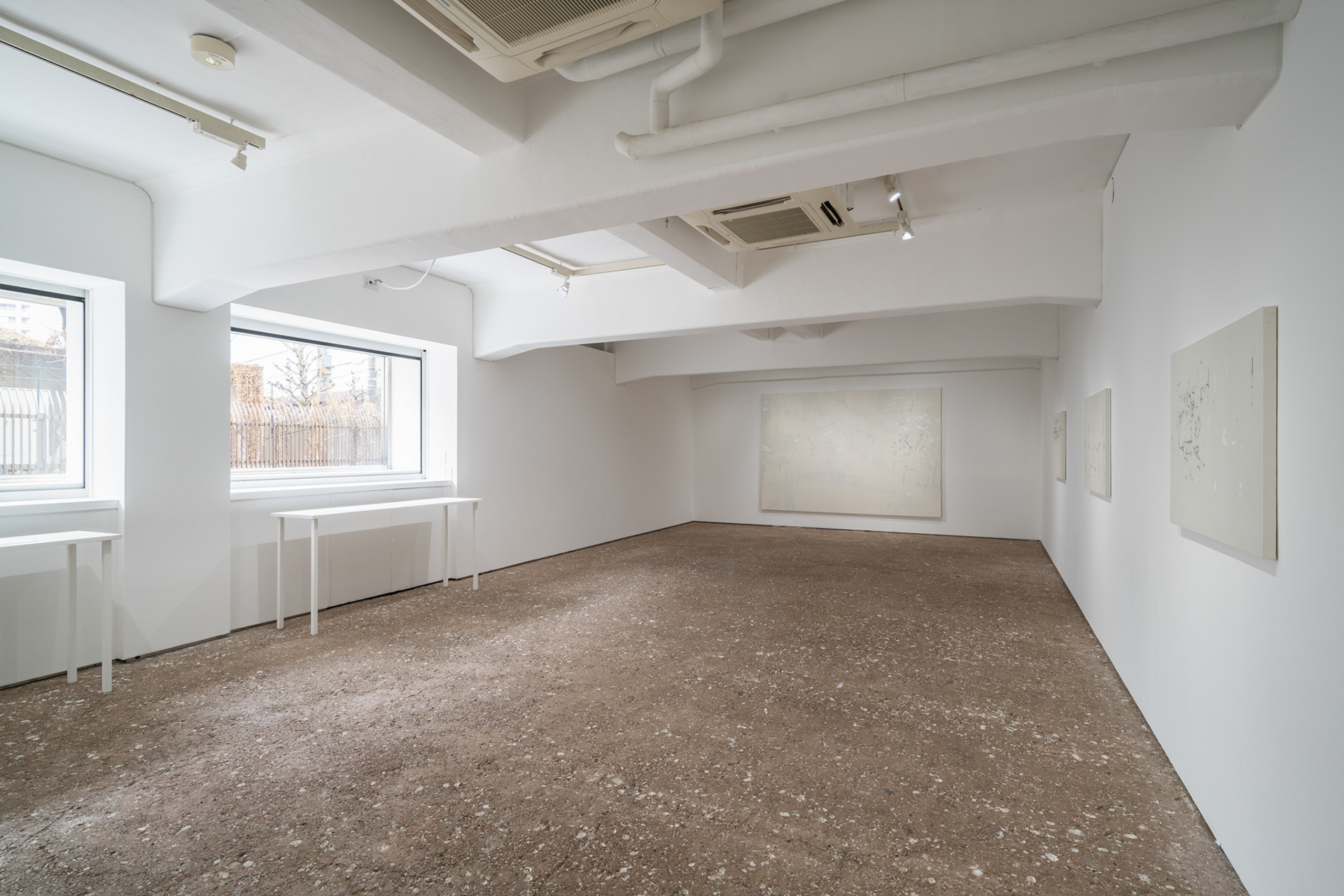








Followed by English translation.
「ACT (Artists Contemporary TOKAS) Vol. 6『メニスル』」
2024年2月24日(土)〜3月24日(日)
トーキョーアーツアンドスペース本郷
〒113-0033 東京都文京区本郷2-4-16
https://www.tokyoartsandspace.jp/archive/exhibition/2024/20240224-7278.html
撮影:加藤 健
画像提供:Tokyo Arts and Space
トーキョーアーツアンドスペース本郷
〒113-0033 東京都文京区本郷2-4-16
https://www.tokyoartsandspace.jp/archive/exhibition/2024/20240224-7278.html
撮影:加藤 健
画像提供:Tokyo Arts and Space
大庭孝文は、自身の経験にもとづく記憶と忘却の関係性を《正しい風景》として表す。制作の起点となる写真から、情報の抜き差しを繰り返し符号化し、日本画の技法やデジタル技術などの複数の工程を重ね画面を構築していく。
今回、大庭は、他者の経験を自己のものと思い込む「記憶の流用」や未体験を実体験と混同する「過誤記憶」に着目し、別々のイメージの断片からなるフィクションとしての新しい風景を描いた。また、新たな試みとして、これまでは制作資料に留めていたスナップ写真やそれらの所有者との対話をもとにした平面作品シリーズ《カテゴリー》を制作した。
画面全体を視野に入れようと距離を持って《正しい風景》に対峙すれば、滑らかな表面に描かれた抽象画のようだ。しかし、近付いてみると、和紙の僅かな毛羽立ちや皺、透けて見える顔料の滲み、複数の素材が用いられ異なる偏光で輝く描線、僅かな厚みのパーツが貼られた凹凸などが、それぞれ慎重に配置されていることがわかる。
一方の《カテゴリー》は、グリッドに並べた写真と数行の文章を載せた用紙を、薄い和紙を貼ったアクリル板が覆う。絵画に用いた描線に類似する形で和紙が切り抜かれた箇所からのみ、下に置かれた文字や写真の一部が辛うじて見える程度で、内容は判読できない。
幾層にも重なったテクスチャの中に断片的な鮮明さを探る感覚は、記憶の片隅にある不確かな何かに触れたときの、もやもやとした苛立ちに似ている。同時に、和紙の柔らかさや丁寧に置かれた金属顔料の鈍い光により、その靄は心地よく変化する。画面を覗き込むことで映り込む鑑賞者自身の影や、展示室に射し入る自然光によって移ろう画面の色も、その解像度の濃淡に影響する。
大庭が圧縮した数々の誰かの記憶は、綿密で意図的な画面配置によって解凍され、単なる過去の書き起こしや抽象化を超え、一枚の絵画の上に存在感を伴って展開する。写真の状況を示唆した作品名が、描かれていない部分を補填し、鑑賞者自身の経験や知見のフィルターを介した記憶として、そして、大庭が提示する正しい風景となって上書きされていく。
今回、大庭は、他者の経験を自己のものと思い込む「記憶の流用」や未体験を実体験と混同する「過誤記憶」に着目し、別々のイメージの断片からなるフィクションとしての新しい風景を描いた。また、新たな試みとして、これまでは制作資料に留めていたスナップ写真やそれらの所有者との対話をもとにした平面作品シリーズ《カテゴリー》を制作した。
画面全体を視野に入れようと距離を持って《正しい風景》に対峙すれば、滑らかな表面に描かれた抽象画のようだ。しかし、近付いてみると、和紙の僅かな毛羽立ちや皺、透けて見える顔料の滲み、複数の素材が用いられ異なる偏光で輝く描線、僅かな厚みのパーツが貼られた凹凸などが、それぞれ慎重に配置されていることがわかる。
一方の《カテゴリー》は、グリッドに並べた写真と数行の文章を載せた用紙を、薄い和紙を貼ったアクリル板が覆う。絵画に用いた描線に類似する形で和紙が切り抜かれた箇所からのみ、下に置かれた文字や写真の一部が辛うじて見える程度で、内容は判読できない。
幾層にも重なったテクスチャの中に断片的な鮮明さを探る感覚は、記憶の片隅にある不確かな何かに触れたときの、もやもやとした苛立ちに似ている。同時に、和紙の柔らかさや丁寧に置かれた金属顔料の鈍い光により、その靄は心地よく変化する。画面を覗き込むことで映り込む鑑賞者自身の影や、展示室に射し入る自然光によって移ろう画面の色も、その解像度の濃淡に影響する。
大庭が圧縮した数々の誰かの記憶は、綿密で意図的な画面配置によって解凍され、単なる過去の書き起こしや抽象化を超え、一枚の絵画の上に存在感を伴って展開する。写真の状況を示唆した作品名が、描かれていない部分を補填し、鑑賞者自身の経験や知見のフィルターを介した記憶として、そして、大庭が提示する正しい風景となって上書きされていく。
トーキョーアーツアンドスペース 大島 彩子
—
ACT (Artists Contemporary TOKAS) Vol. 6 “Layers of Optical Experience”
Feb. 24 - Mar. 24, 2024
Tokyo Arts and Space Hongo
2 Chome-4-16 Hongo, Bunkyo City, Tokyo 113-0033
https://www.tokyoartsandspace.jp/archive/exhibition/2024/20240224-7278.html
Photo: KATO Ken
Photo courtesy of Tokyo Arts and Space
Tokyo Arts and Space Hongo
2 Chome-4-16 Hongo, Bunkyo City, Tokyo 113-0033
https://www.tokyoartsandspace.jp/archive/exhibition/2024/20240224-7278.html
Photo: KATO Ken
Photo courtesy of Tokyo Arts and Space
Ohba Takafumi explores relationships between remembering and forgetting, based on his own experiences, in works that he terms right landscape(s). Taking photographs as a starting point, he carries out a process of encoding, alternately adding and removing information, to construct works in multiple layers using Nihonga (Japanese-style painting) techniques and digital technologies.
In this new body of work, Ohba turns his attention to “appropriated memories,” which seem to be one’s own but actually belong to others, and “false memories” of things that did not actually occur. He draws forth new landscapes by combining fragments of disparate images into a fictional whole. Ohba has also adopted a novel approach in category, a series of two- dimensional works based on snapshots and conversations with their owners, taking a more direct approach to materials which he previously incorporated more obliquely.
Seen in their entirety from a distance, right landscape(s) resemble abstract paintings on smooth surfaces. However, a closer looks reveals elaborate arrangements of subtle textures of washi paper, pigments seeping through from beneath, lines made with a range of materials gleaming with varying degrees of polarization, and elements affixed to the surface to produce subtle concavities and convexities.
Meanwhile, category features thin layers of washi paper over acrylic panels, beneath which photos and sheets of paper bearing a few lines of text are organized in grids. The text and photos are only visible in glimpses through cutouts in the washi paper, which resemble the linework in the paintings, rendering the underlying content indecipherable.
The sensation of seeking fragmented clarity amid many textured layers evokes the vexation of encountering something that lurks in a hazy corner of one’s memory. However, the haze in these works fluctuates pleasantly, due to the washi paper’s soft texture and the soft glow of carefully placed metallic pigments. The viewer’s own reflection in the work’s surface, and hues shifting in the natural light filtering into the exhibition space, also affect the works’ gradated degree of resolution.
Ohba’s compressed memories, meticulously and strategically arrayed across surfaces, emerge in the works as tangible presences, transcending mere recall of the past or a simple process of abstraction. The works’ titles, hinting at scenes unfolding in the photographs, help fill in the blanks, and filtered through the viewer’s own experiences and insights, surfaces are overwritten as the “right landscape(s)” that Ohba presents.
In this new body of work, Ohba turns his attention to “appropriated memories,” which seem to be one’s own but actually belong to others, and “false memories” of things that did not actually occur. He draws forth new landscapes by combining fragments of disparate images into a fictional whole. Ohba has also adopted a novel approach in category, a series of two- dimensional works based on snapshots and conversations with their owners, taking a more direct approach to materials which he previously incorporated more obliquely.
Seen in their entirety from a distance, right landscape(s) resemble abstract paintings on smooth surfaces. However, a closer looks reveals elaborate arrangements of subtle textures of washi paper, pigments seeping through from beneath, lines made with a range of materials gleaming with varying degrees of polarization, and elements affixed to the surface to produce subtle concavities and convexities.
Meanwhile, category features thin layers of washi paper over acrylic panels, beneath which photos and sheets of paper bearing a few lines of text are organized in grids. The text and photos are only visible in glimpses through cutouts in the washi paper, which resemble the linework in the paintings, rendering the underlying content indecipherable.
The sensation of seeking fragmented clarity amid many textured layers evokes the vexation of encountering something that lurks in a hazy corner of one’s memory. However, the haze in these works fluctuates pleasantly, due to the washi paper’s soft texture and the soft glow of carefully placed metallic pigments. The viewer’s own reflection in the work’s surface, and hues shifting in the natural light filtering into the exhibition space, also affect the works’ gradated degree of resolution.
Ohba’s compressed memories, meticulously and strategically arrayed across surfaces, emerge in the works as tangible presences, transcending mere recall of the past or a simple process of abstraction. The works’ titles, hinting at scenes unfolding in the photographs, help fill in the blanks, and filtered through the viewer’s own experiences and insights, surfaces are overwritten as the “right landscape(s)” that Ohba presents.
Tokyo Arts and Space OSHIMA Ayako
作品リスト
List of works
List of works


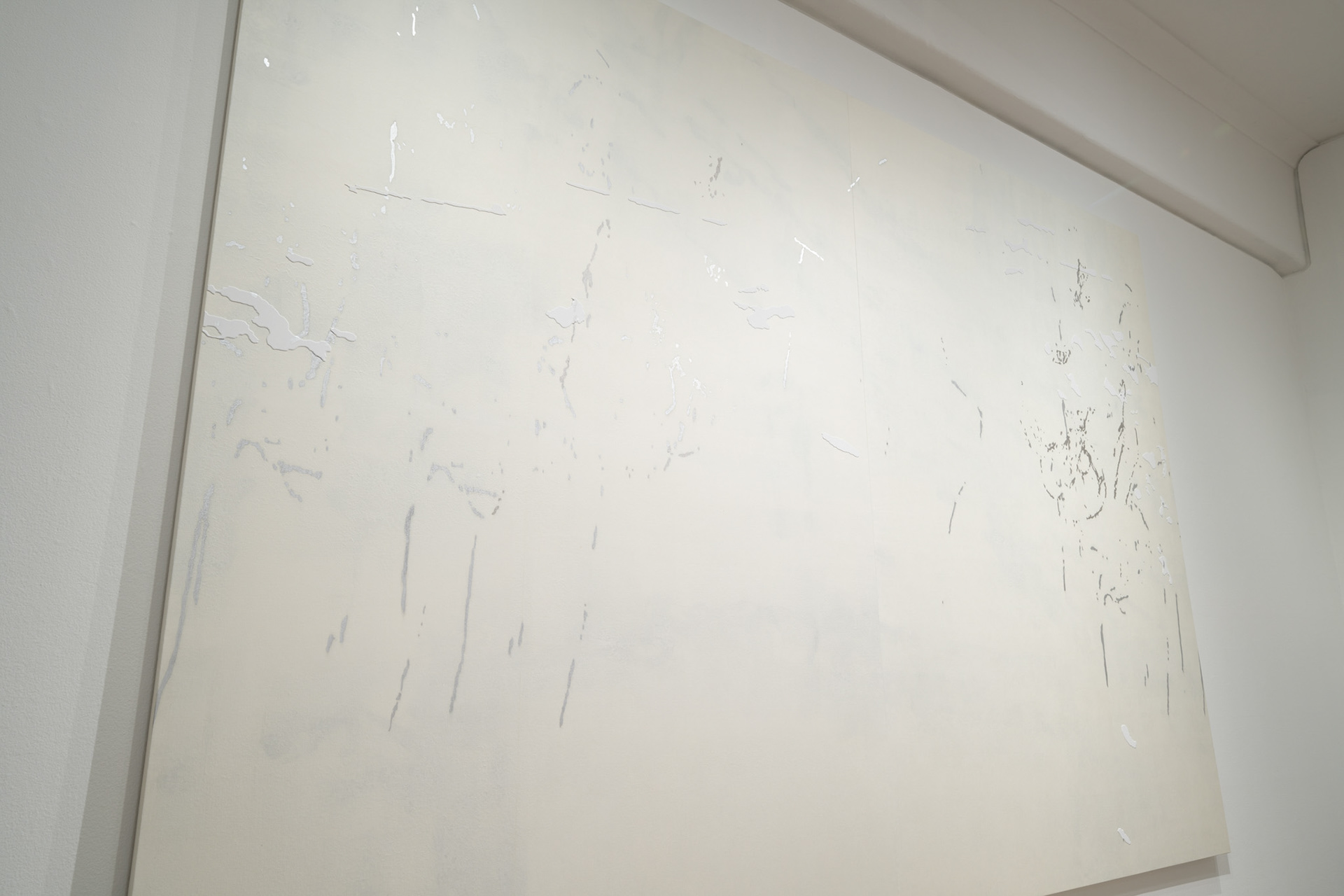
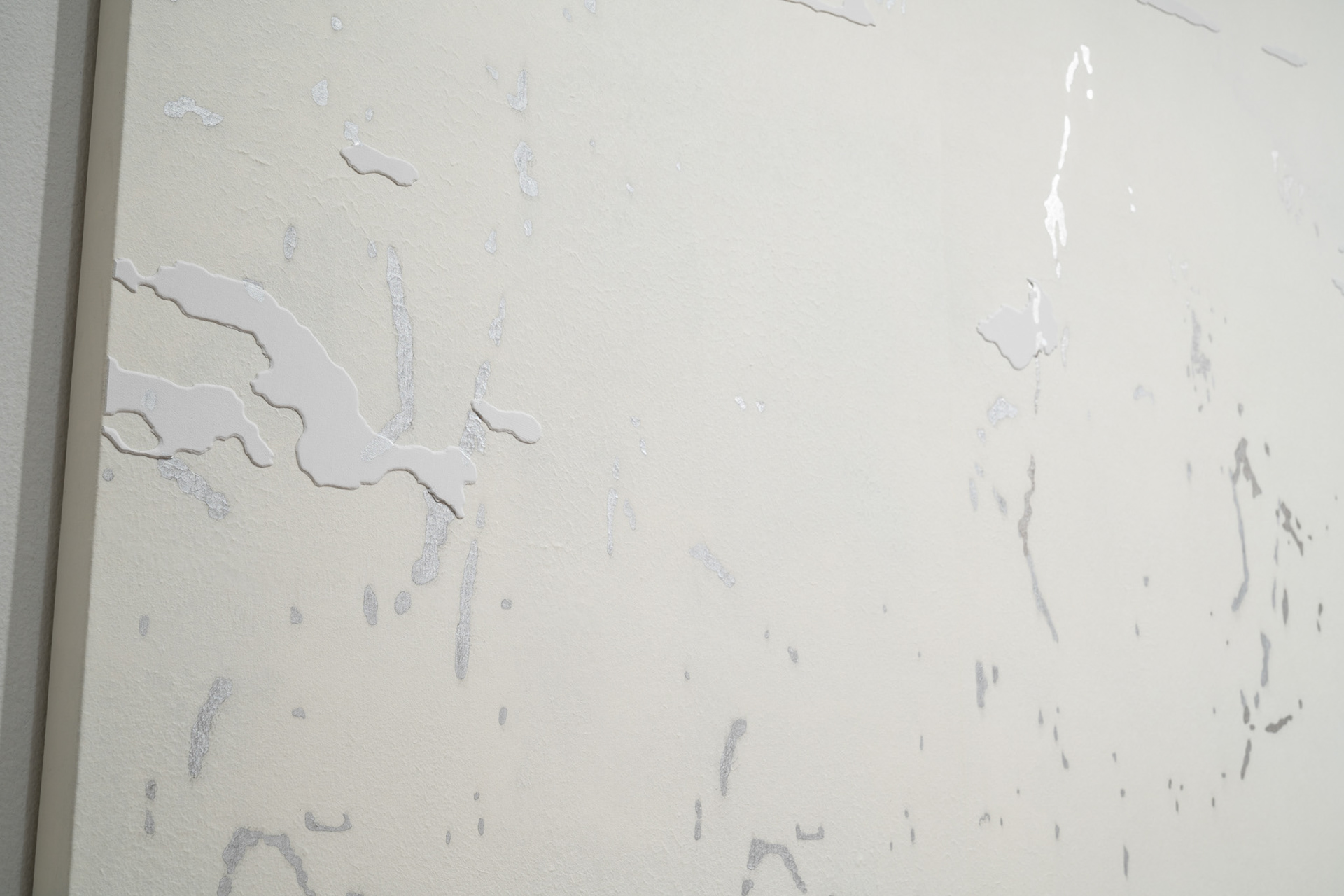


《正しい風景 (犬が雷を怖がっている)》
right landscape (the dog is scared of thunder)
2023
木製パネルにプラチナ、アルミニウム、アクリル絵具、岩絵具、膠、合成接着剤、 スチレンペーパー、和紙
Platinum, aluminum, acrylic paint, mineral pigments, glue, synthetic adhesive, styrene paper, Japanese paper on wooden panel
2100×3000×33 mm
right landscape (the dog is scared of thunder)
2023
木製パネルにプラチナ、アルミニウム、アクリル絵具、岩絵具、膠、合成接着剤、 スチレンペーパー、和紙
Platinum, aluminum, acrylic paint, mineral pigments, glue, synthetic adhesive, styrene paper, Japanese paper on wooden panel
2100×3000×33 mm
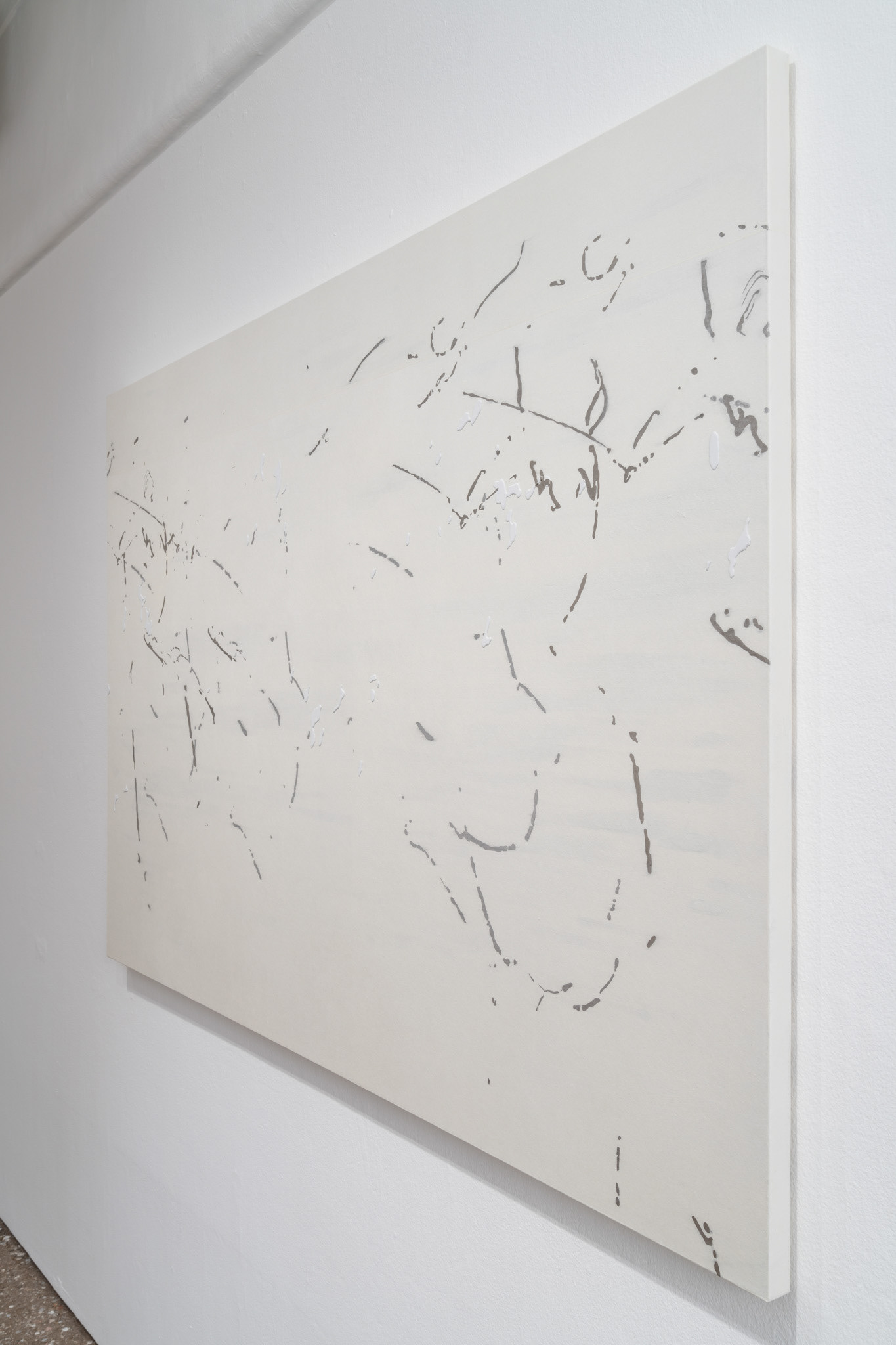
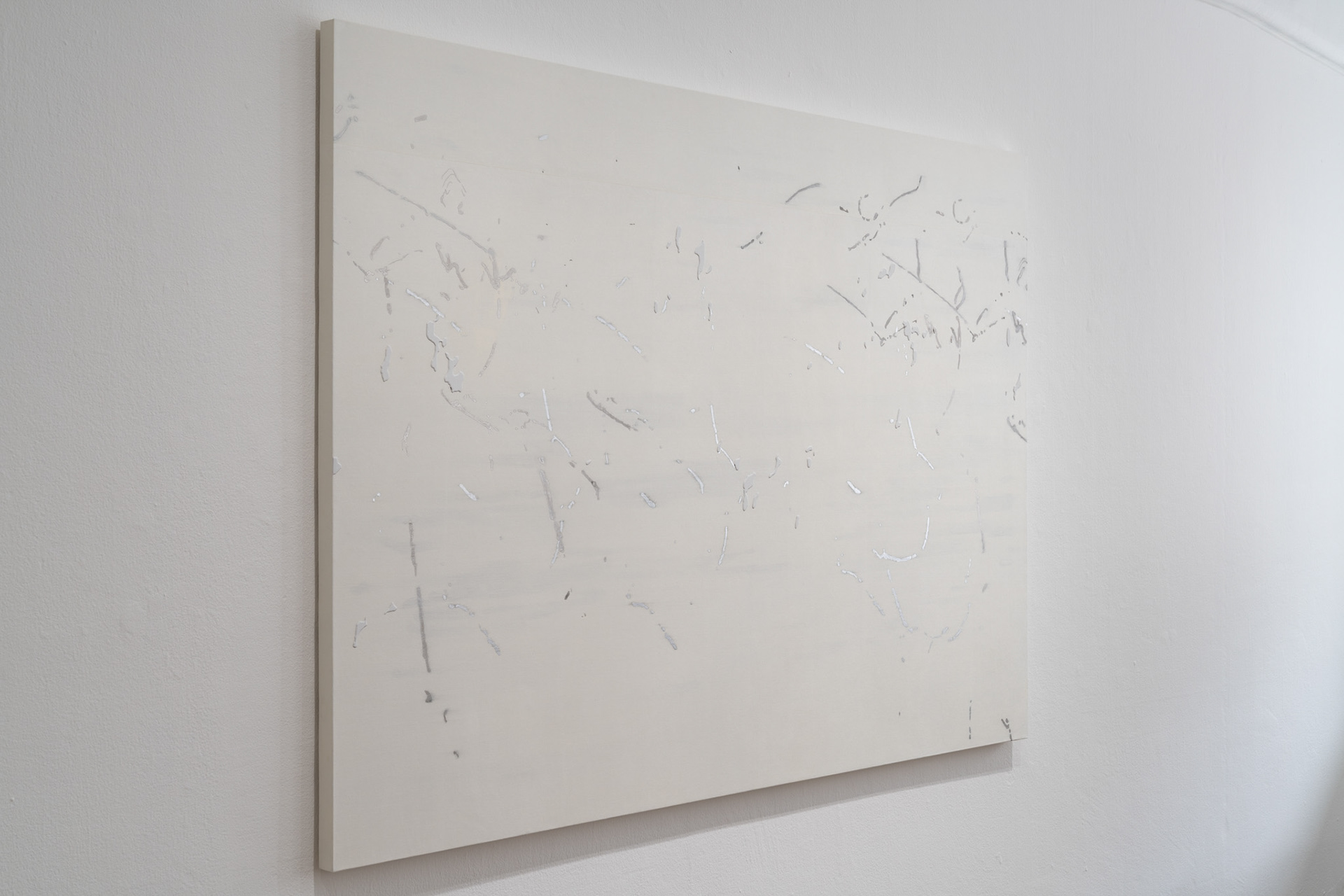


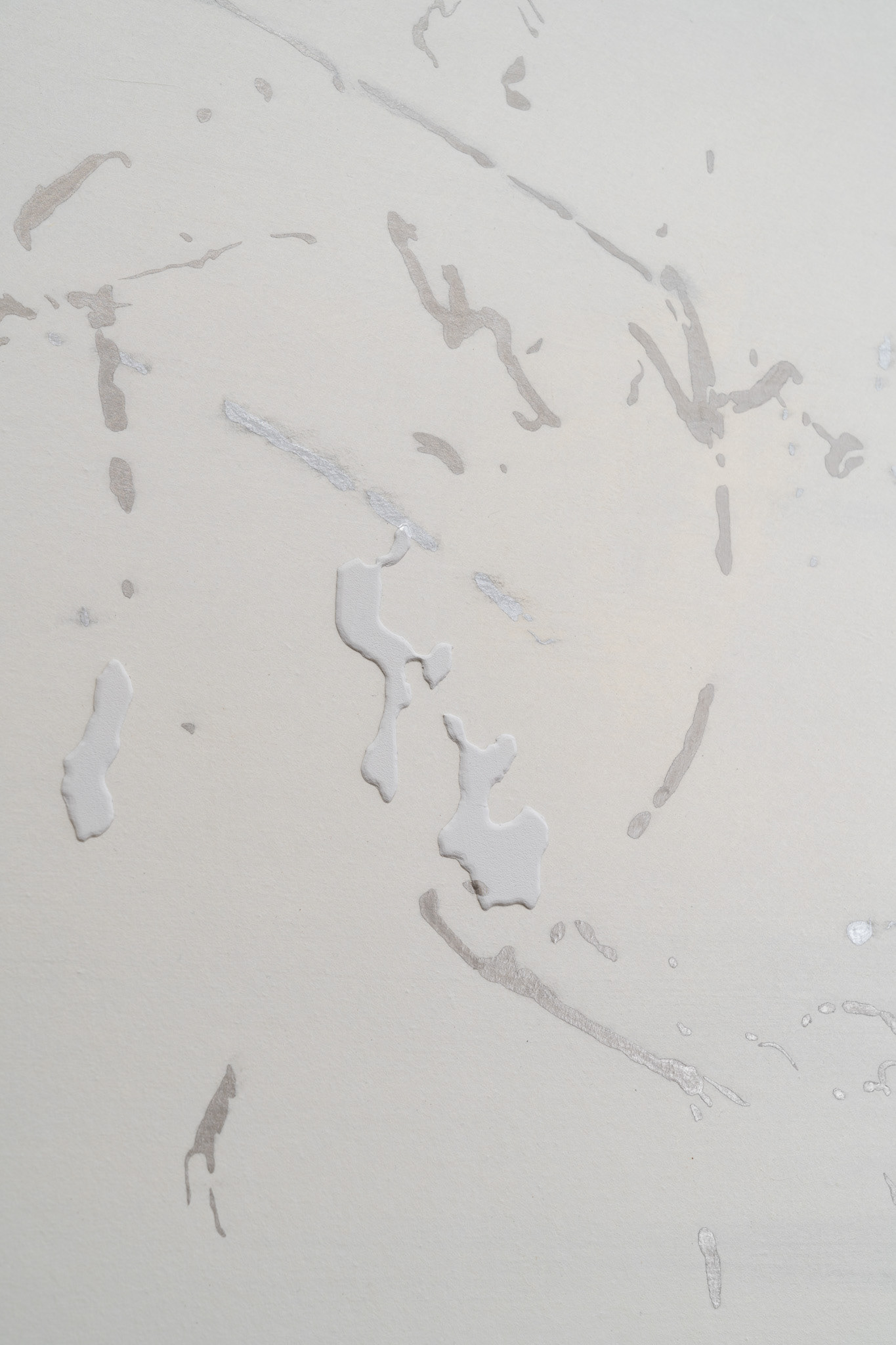
《正しい風景(子供のような小さなツバメ)》
right landscape (little swallows like children)
2023
木製パネルにプラチナ、アルミニウム、アクリル絵具、岩絵具、膠、合成接着剤、 スチレンペーパー、和紙
Platinum, aluminum, acrylic paint, mineral pigments, glue, synthetic adhesive, styrene paper, Japanese paper on wooden panel
1134×1620×30 mm
right landscape (little swallows like children)
2023
木製パネルにプラチナ、アルミニウム、アクリル絵具、岩絵具、膠、合成接着剤、 スチレンペーパー、和紙
Platinum, aluminum, acrylic paint, mineral pigments, glue, synthetic adhesive, styrene paper, Japanese paper on wooden panel
1134×1620×30 mm


《正しい風景(島の外周からみえる船着場)》
right landscape (boat landing seen from the outer perimeter of the island)
2024
木製パネルにプラチナ、アルミニウム、アクリル絵具、岩絵具、膠、合成接着剤、 スチレンペーパー、和紙
Platinum, aluminum, acrylic paint, mineral pigments, glue, synthetic adhesive, styrene paper, Japanese paper on wooden panel
700×1000×28 mm
right landscape (boat landing seen from the outer perimeter of the island)
2024
木製パネルにプラチナ、アルミニウム、アクリル絵具、岩絵具、膠、合成接着剤、 スチレンペーパー、和紙
Platinum, aluminum, acrylic paint, mineral pigments, glue, synthetic adhesive, styrene paper, Japanese paper on wooden panel
700×1000×28 mm
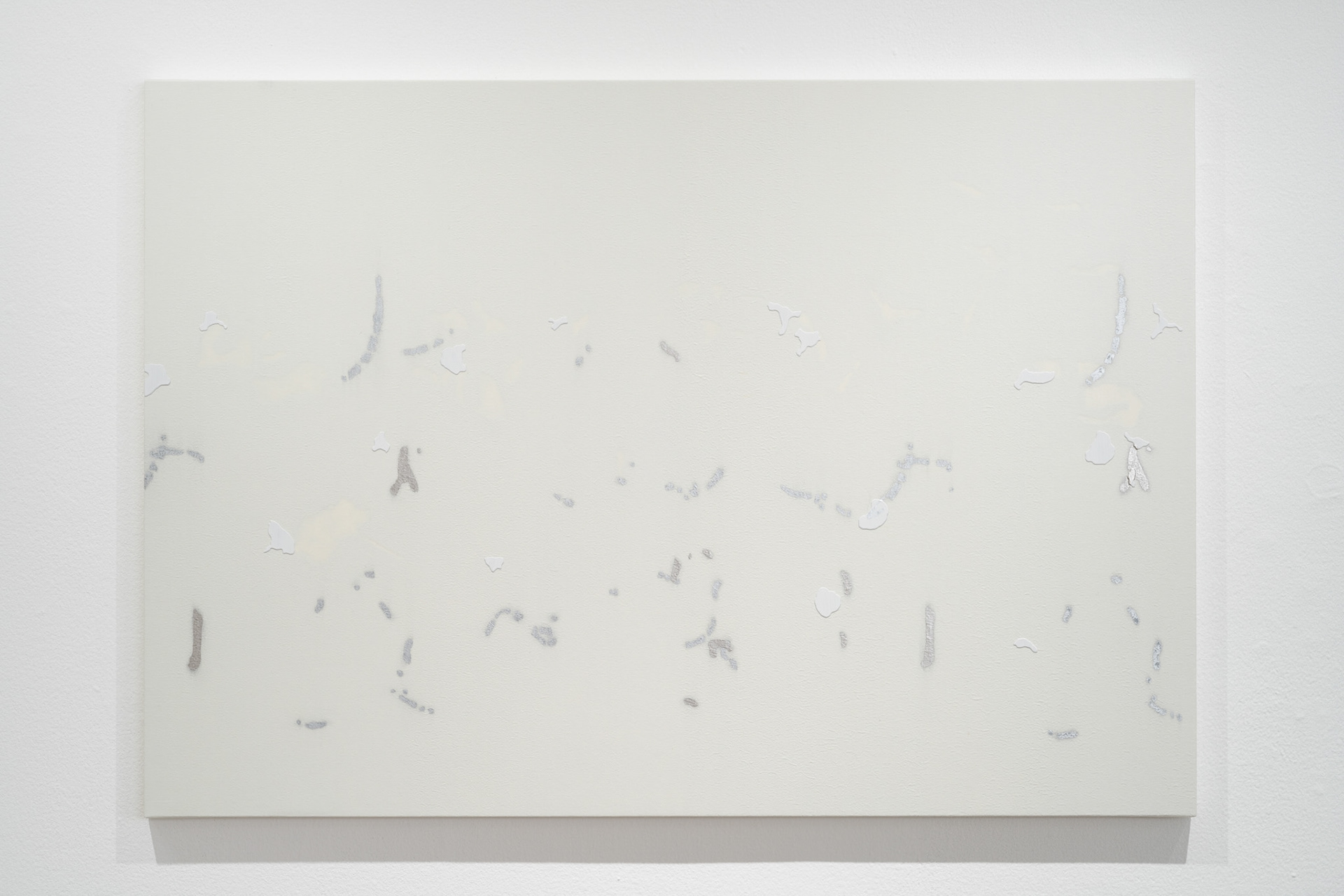


《正しい風景(午後に咲いている朝顔)》
right landscape (morning glory blooming in the afternoon)
2024
木製パネルにプラチナ、アルミニウム、アクリル絵具、岩絵具、膠、合成接着剤、 スチレンペーパー、和紙
Platinum, aluminum, acrylic paint, mineral pigments, glue, synthetic adhesive, styrene paper, Japanese paper on wooden panel
700×1000×28 mm
right landscape (morning glory blooming in the afternoon)
2024
木製パネルにプラチナ、アルミニウム、アクリル絵具、岩絵具、膠、合成接着剤、 スチレンペーパー、和紙
Platinum, aluminum, acrylic paint, mineral pigments, glue, synthetic adhesive, styrene paper, Japanese paper on wooden panel
700×1000×28 mm


《正しい風景(公園に落ちているヒマワリの種 )》
right landscape (sunflower seeds falling in the park)
2023
木製パネルにプラチナ、アルミニウム、アクリル絵具、岩絵具、膠、合成接着剤、 スライスウッド、和紙
Platinum, aluminum, acrylic paint, mineral pigments, glue, synthetic adhesive, sliced wood, Japanese paper on wooden panel
700×1000×28 mm
right landscape (sunflower seeds falling in the park)
2023
木製パネルにプラチナ、アルミニウム、アクリル絵具、岩絵具、膠、合成接着剤、 スライスウッド、和紙
Platinum, aluminum, acrylic paint, mineral pigments, glue, synthetic adhesive, sliced wood, Japanese paper on wooden panel
700×1000×28 mm


《カテゴリー(風景)》
category (landscapes)
2024
アクリル、レーザープリント、和紙
Acrylic, laser print, Japanese paper
280×400×3 mm
category (landscapes)
2024
アクリル、レーザープリント、和紙
Acrylic, laser print, Japanese paper
280×400×3 mm

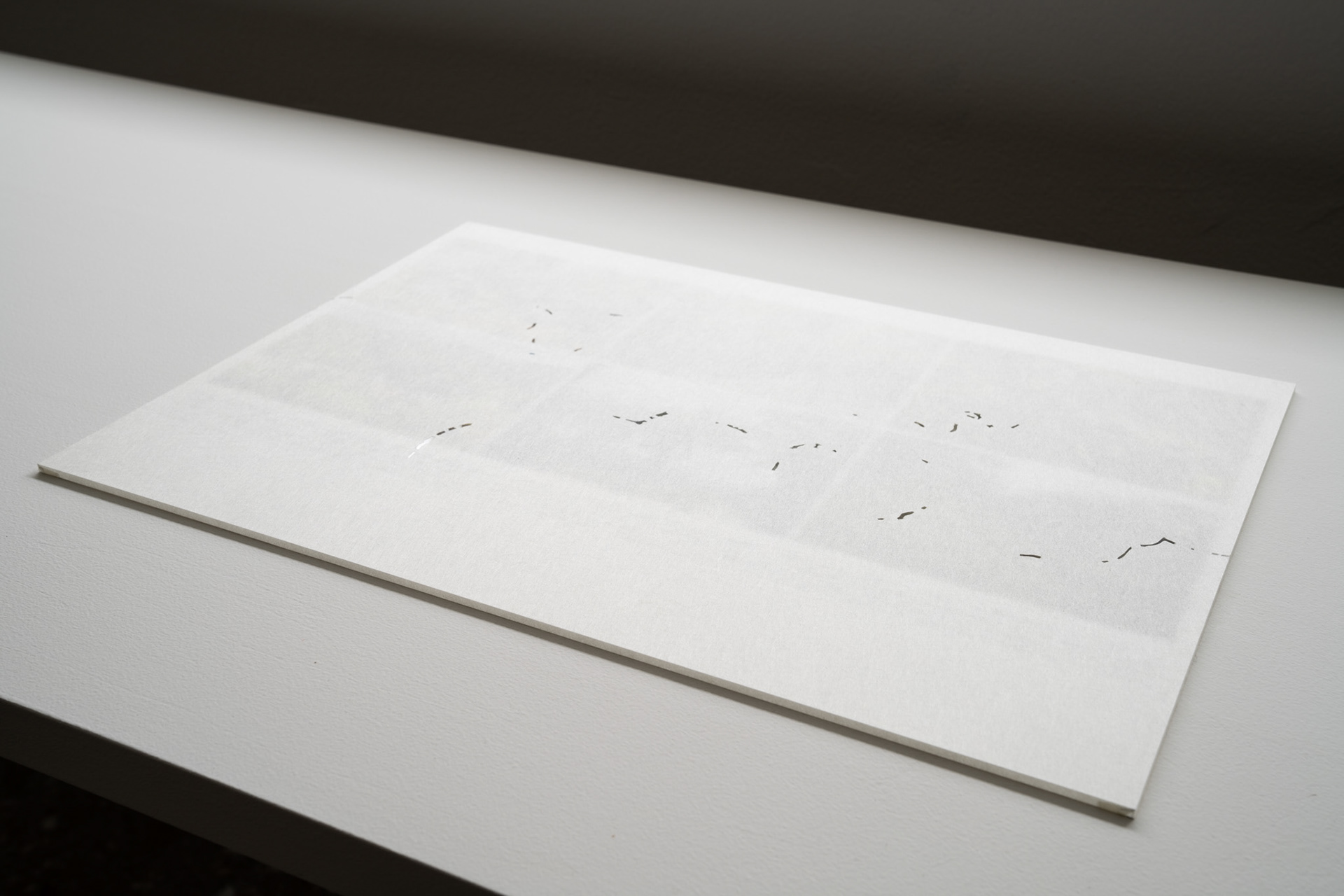
《カテゴリー(植物)》
category (plants)
2024
アクリル、レーザープリント、和紙
Acrylic, laser print, Japanese paper
280×400×3 mm
category (plants)
2024
アクリル、レーザープリント、和紙
Acrylic, laser print, Japanese paper
280×400×3 mm

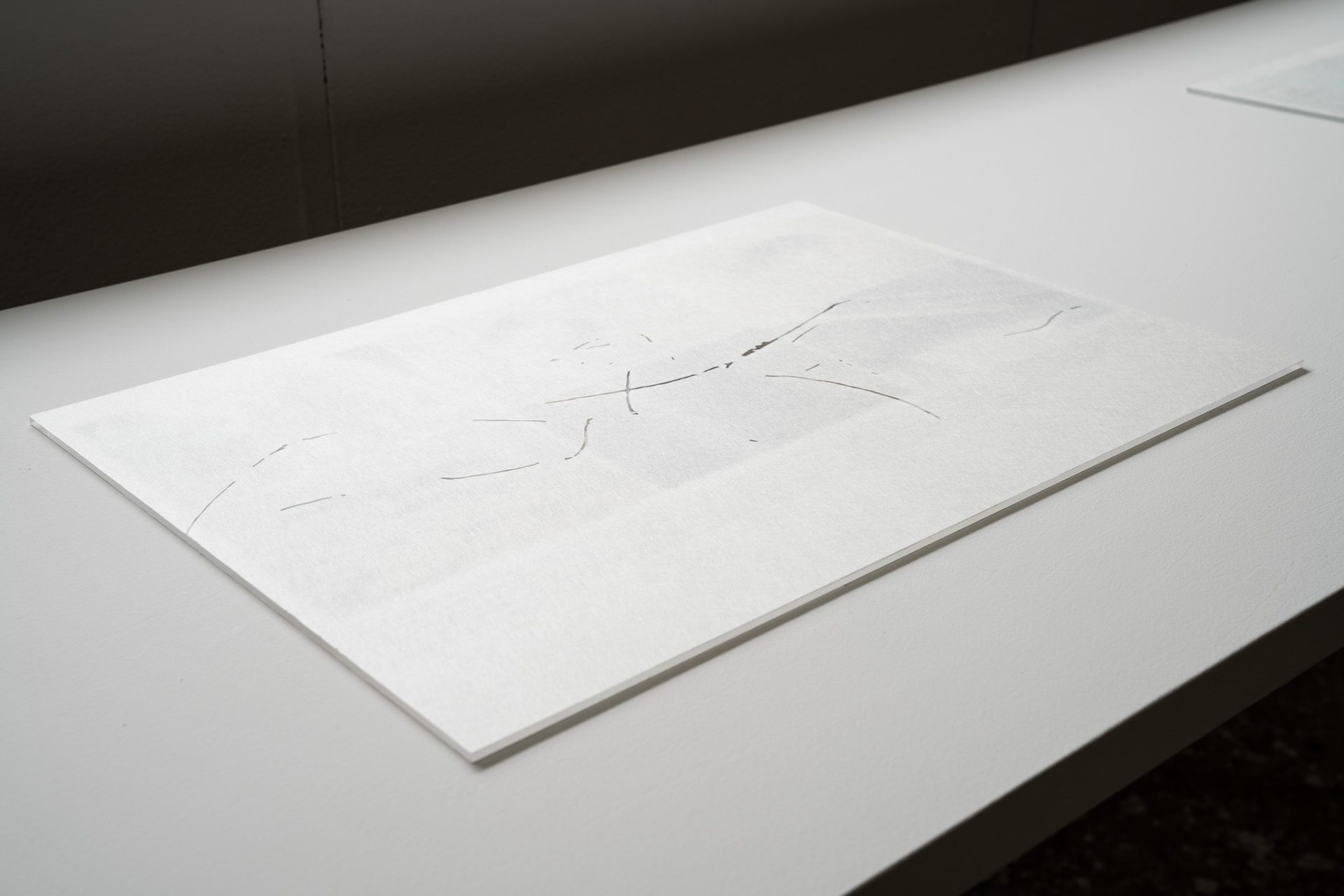
《カテゴリー(動物)》
category (animals)
2024
アクリル、レーザープリント、和紙
Acrylic, laser print, Japanese paper
280×400×3 mm
category (animals)
2024
アクリル、レーザープリント、和紙
Acrylic, laser print, Japanese paper
280×400×3 mm


《カテゴリー(日常)》
category (everyday life)
2024
アクリル、レーザープリント、和紙
Acrylic, laser print, Japanese paper
280×400×3 mm
category (everyday life)
2024
アクリル、レーザープリント、和紙
Acrylic, laser print, Japanese paper
280×400×3 mm